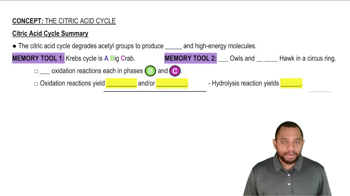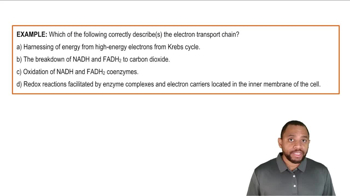The citric acid cycle contains four 4-carbon dicarboxylic acids.
b. Arrange them in order from least oxidized to most oxidized.
 Verified step by step guidance
Verified step by step guidance Verified video answer for a similar problem:
Verified video answer for a similar problem:



 :50m
:50mMaster Phase A - Citrate Formation Concept 1 with a bite sized video explanation from Jules
Start learning